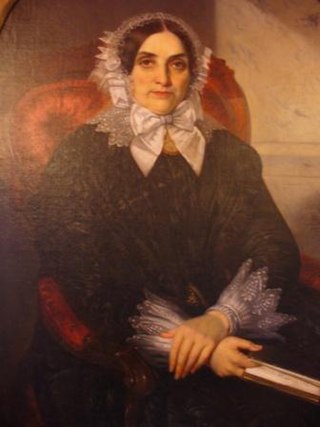
Baron is a rank of nobility or title of honour, often hereditary, in various European countries, either current or historical. The female equivalent is baroness. Typically, the title denotes an aristocrat who ranks higher than a lord or knight, but lower than a viscount or count. Often, barons hold their fief – their lands and income – directly from the monarch. Barons are less often the vassals of other nobles. In many kingdoms, they were entitled to wear a smaller form of a crown called a coronet.

A fief was a central element in medieval contracts based on feudal law. It consisted of a form of property holding or other rights granted by an overlord to a vassal, who held it in fealty or "in fee" in return for a form of feudal allegiance, services or payments. The fees were often lands, land revenue or revenue-producing real property like a watermill, held in feudal land tenure: these are typically known as fiefs or fiefdoms. However, not only land but anything of value could be held in fee, including governmental office, rights of exploitation such as hunting, fishing or felling trees, monopolies in trade, money rents and tax farms. There never existed a standard feudal system, nor did there exist only one type of fief. Over the ages, depending on the region, there was a broad variety of customs using the same basic legal principles in many variations.
Escheat is a common law doctrine that transfers the real property of a person who has died without heirs to the crown or state. It serves to ensure that property is not left in "limbo" without recognized ownership. It originally applied to a number of situations where a legal interest in land was destroyed by operation of law, so that the ownership of the land reverted to the immediately superior feudal lord.

Under the English feudal system several different forms of land tenure existed, each effectively a contract with differing rights and duties attached thereto. Such tenures could be either free-hold if they were hereditable or perpetual or non-free if they terminated on the tenant's death or at an earlier specified period.

Lord of the manor is a title that, in Anglo-Saxon England and Norman England, referred to the landholder of a rural estate. The titles date to the English feudal system. The lord enjoyed manorial rights as well as seignory, the right to grant or draw benefit from the estate. The title continues in modern England and Wales as a legally recognised form of property that can be held independently of its historical rights. It may belong entirely to one person or be a moiety shared with other people. The title is known as Breyr in Welsh.
False titles of nobility or royal title scams are claimed titles of social rank that have been fabricated or assumed by an individual or family without recognition by the authorities of a country in which titles of nobility exist or once existed. They have received an increasing amount of press attention, as more schemes that purport to confer or sell such honorifics are promoted on the internet. Concern about the use of titles which lack legal standing or a basis in tradition has prompted increased vigilance and denunciation, although under English common law a person may choose to be known by any name they see fit as long as it is not done to "commit fraud or evade an obligation".
In feudal law, nulle terre sans seigneur is the principle that one provides services to the sovereign for the right to receive land from the sovereign. Originally a maxim of feudal law, it applies in modern form to paying rates or land tax for land of former feudal or feudal-like origin such as land with modern fee simple title, as opposed to land with allodial or udal title.
Examples of feudalism are helpful to fully understand feudalism and feudal society. Feudalism was practiced in many different ways, depending on location and period, thus a high-level encompassing conceptual definition does not always provide a reader with the intimate understanding that detailed historical examples provide.

In medieval and early modern Europe, a tenant-in-chief was a person who held his lands under various forms of feudal land tenure directly from the king or territorial prince to whom he did homage, as opposed to holding them from another nobleman or senior member of the clergy. The tenure was one which denoted great honour, but also carried heavy responsibilities. The tenants-in-chief were originally responsible for providing knights and soldiers for the king's feudal army.
Udal law is a Norse-derived legal system, found in Shetland and Orkney in Scotland, and in Manx law in the Isle of Man. It is closely related to Odelsrett; both terms are from Proto-Germanic *Ōþalan, meaning "heritage; inheritance".
Seisin denotes the legal possession of a feudal fiefdom or fee, that is to say an estate in land. It was used in the form of "the son and heir of X has obtained seisin of his inheritance", and thus is effectively a term concerned with conveyancing in the feudal era. The person holding such estate is said to be "seized of it", a phrase which commonly appears in inquisitions post mortem. The monarch alone "held" all the land of England by his allodial right and all his subjects were merely his tenants under various contracts of feudal tenure.

In Scotland, a baron or baroness is the head of a feudal barony, also known as a prescriptive barony. This used to be attached to a particular piece of land on which was situated the caput or essence of the barony, normally a building, such as a castle or manor house. Accordingly, the owner of the piece of land containing the caput was called a baron or baroness. According to Grant, there were around 350 identifiable local baronies in Scotland by the early fifteenth century and these could mostly be mapped against local parish boundaries. The term baron was in general use from the thirteenth century to describe what would have been known in England as a knight of the shire.

The Odelsrett is an ancient Scandinavian allodial title which has survived in Norway as odelsrett and existed until recent times in Sweden as bördsrätt.

In the Middle Ages, especially under the European feudal system, feoffment or enfeoffment was the deed by which a person was given land in exchange for a pledge of service. This mechanism was later used to avoid restrictions on the passage of title in land by a system in which a landowner would give land to one person for the use of another. The common law of estates in land grew from this concept.

A feudal baron is a vassal holding a heritable fief called a barony, comprising a specific portion of land, granted by an overlord in return for allegiance and service. Following the end of European feudalism, feudal baronies have largely been superseded by baronies held as a rank of nobility, without any attachment to a fief. However, in Scotland, the feudal dignity of baron remains in existence, and may be bought and sold independently of the land to which it was formerly attached.
In the law of the Middle Ages and early modern period, especially within the Holy Roman Empire, an allod, also allodial land or allodium, is an estate in land over which the allodial landowner (allodiary) had full ownership and right of alienation.

A heerlijkheid was a landed estate that served as the lowest administrative and judicial unit in rural areas in the Dutch-speaking Low Countries before 1800. It originated as a unit of lordship under the feudal system during the Middle Ages. The English equivalents are manor, seigniory and lordship. The German equivalent is Herrschaft. The heerlijkheid system was the Dutch version of manorialism that prevailed in the Low Countries and was the precursor to the modern municipality system in the Netherlands and Flemish Belgium.

In the kingdom of England, a feudal barony or barony by tenure was the highest degree of feudal land tenure, namely per baroniam, under which the land-holder owed the service of being one of the king's barons. The duties owed by and the privileges granted to feudal barons are not exactly defined, but they involved the duty of providing soldiers to the royal feudal army on demand by the king, and the privilege of attendance at the king's feudal court, the Magnum Concilium, the precursor of parliament.

Feudalism as practiced in the Kingdoms of England during the medieval period was a state of human society that organized political and military leadership and force around a stratified formal structure based on land tenure. As a military defence and socio-economic paradigm designed to direct the wealth of the land to the king while it levied military troops to his causes, feudal society was ordered around relationships derived from the holding of land. Such landholdings are termed fiefdoms, traders, fiefs, or fees.

Seigneur or lord is an originally feudal title in France before the Revolution, in New France and British North America until 1854, and in the Channel Islands to this day. The seigneur owned a seigneurie, seigneury, or lordship—a form of title or land tenure—as a fief, with its associated obligations and rights over person and property. In this sense, a seigneur could be an individual—male or female, high or low-born—or a collective entity, typically a religious community such as a monastery, seminary, college, or parish. In the wake of the French Revolution, seigneurialism was repealed in France on 4 August 1789 and in the Province of Canada on 18 December 1854. Since then, the feudal title has only been applicable in the Channel Islands and for sovereign princes by their families.









